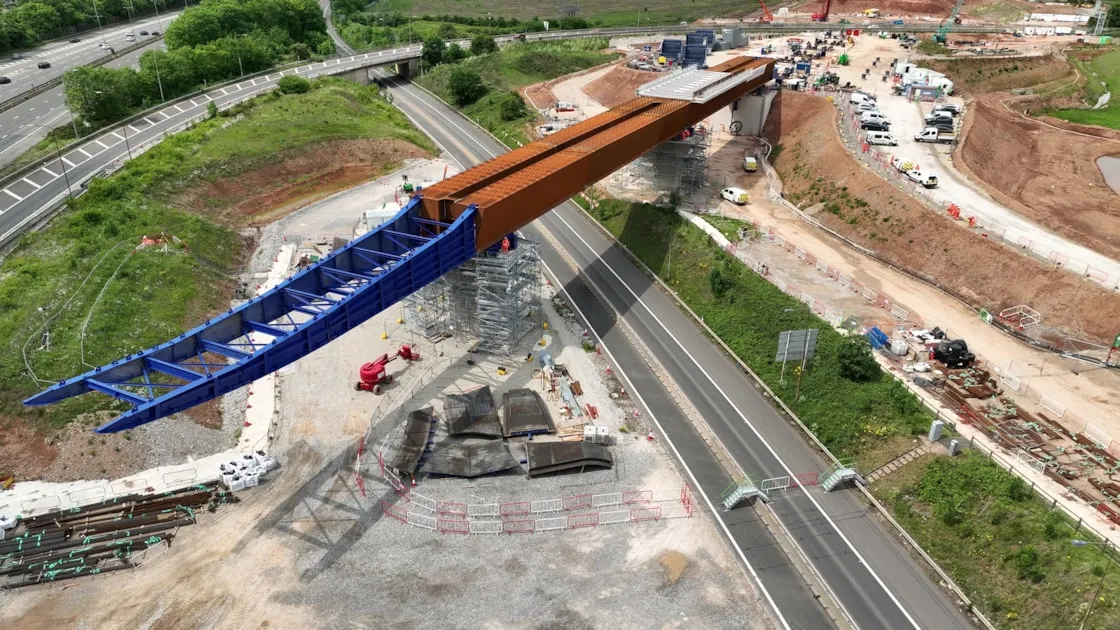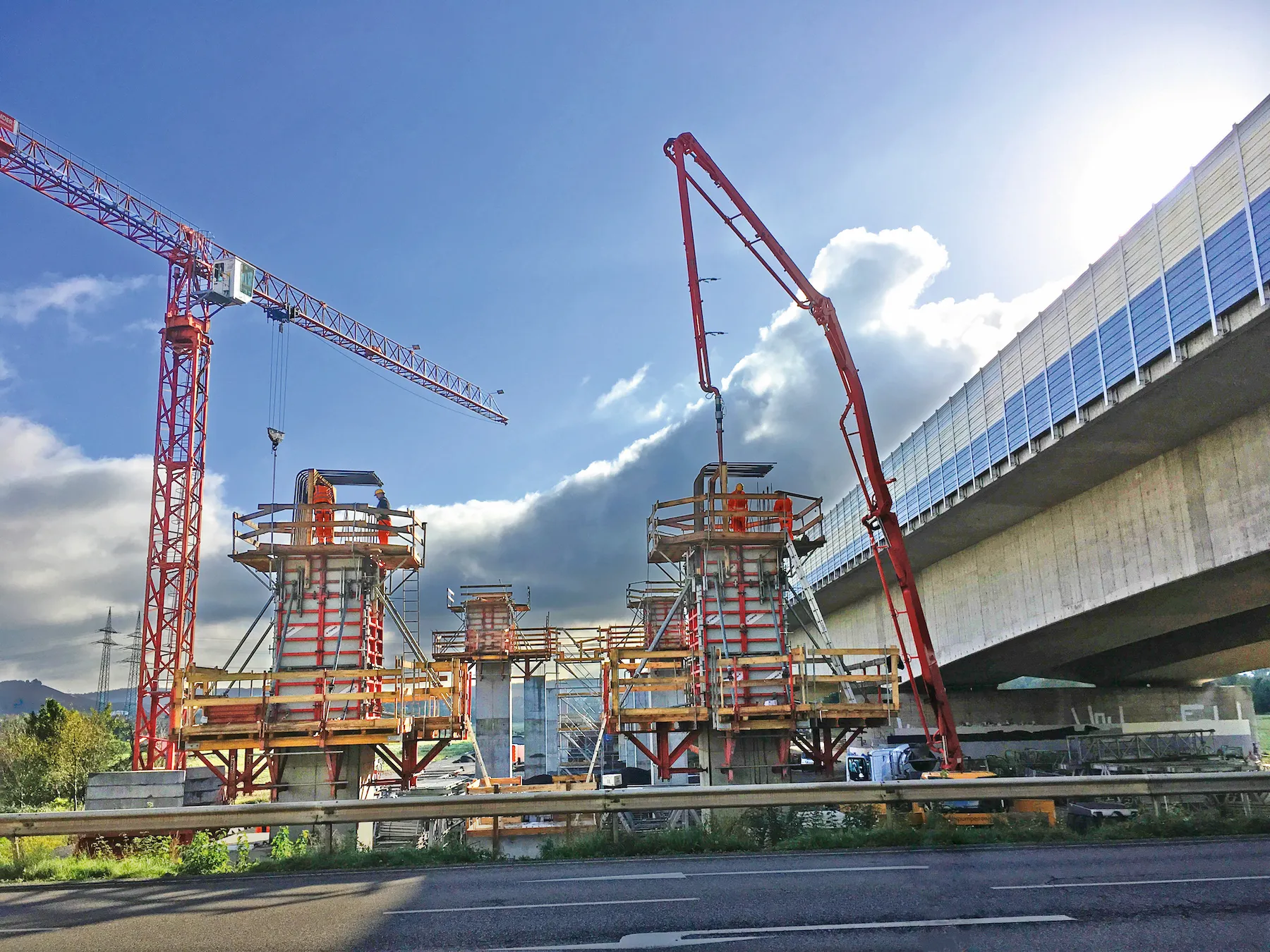
Engineers have now installed the first section of the M6 South viaduct’s East Deck in position. A low friction material was used to slide the first of three giant sections into place over a slip road during a 29-hour closure, reopening to traffic 11 hours earlier than planned. The multi-stage sliding technique being used means that just three weekend closures will be needed to get the East deck into position, with the next two taking it across the motorway and adjacent M6-M42 link road.
The team working for the HS2 project managed to slide the first part of a major 320m-long viaduct into position. This structure will carry high speed trains across the M6 near Birmingham Airport. The first stage of the project saw the ‘East Deck’ of the M6 South viaduct slid 119m out over a slip road adjacent to the motorway. To reduce disruption for motorists, the viaduct deck is being assembled to one side and slid across the motorway over three weekends, with each part pushed out before later sections are added behind them.
This multi-stage process means that the weight of the deck will increase with each push from 1,300tonnes, to 3,290tonnes once the final slide is complete. These subsequent slides will take the deck out over the main M6 carriageway and then finally the M6-M42 link roads. The weight includes pre-cast concrete deck slabs on top of the steel structure. Launching the viaduct with the deck units already in place further reduces the number of closures of the motorway.
The East Deck will carry two tracks taking trains towards London while an adjacent ‘West Deck’ will carry a further two tracks for services heading to Birmingham and further north. This will be assembled and slid out next year using the same technique.
Liam Kenney, HS2 Ltd’s Senior project manager said: “It’s great to see the first section of the East Deck in position over the weekend. Once complete, these twin viaducts will carry high speed trains over the M6 helping to improve journeys and free up space on the existing rail network for more freight and local services.
The complex operation is being led by HS2’s main works contractor, BBV – a team made up of Balfour Beatty and VINCI, supported by specialist steelwork company Victor Buyck Steel Construction (VBSC). The team are working closely with National Highways and other key local stakeholders including the NEC and Birmingham Airport.
Victoria Lazenby, National Highways regional director for the Midlands, said: “We know that any work on our roads affects drivers and local communities and always try to keep that disruption to a minimum. So we are delighted by the innovation shown by HS2 and BBV in this complex engineering feat to reduce the impact on road users.
The viaduct section was moved using a series of winches, known as strand jacks, at an average speed of 12m/hour, sliding across non-stick pads to reduce friction. A 36m-long temporary launch nose was installed to the front of the structure, to guide the viaduct on its launching path and reduce the weight of the cantilevered section. The viaduct, and the launch nose, will remain in its current position while the next section is assembled. The viaduct is restrained temporarily by equipment located on the piers and the abutments.
Russell Luckhurst, the Balfour Beatty VINCI’s engineer leading the delivery of the works, said: “This complex viaduct spanning the M6 motorway and adjoining slip roads is really beginning to take shape, now we’ve successfully moved the first section into place.
Each viaduct span is formed of a hollow double-box structure made of weathering steel. This kind of steel boasts a natural protective layer of oxidisation which reduces maintenance by eliminating the need for regular repainting. Four pairs of concrete piers support the viaducts with tallest one 9.9m in height. A 4.5m high parapet will be provided on the side facing the Chelmsely Wood to reduce noise and disturbance from passing trains.
The structural design has been carried out by Balfour Beatty VINCI’s Design Joint Venture, made up of Mott MacDonald and SYSTRA.
Tom Dutton, senior design co-ordinator for the Mott MacDonald SYSTRA DJV, said: “The launch of the first deck of the two-deck M6 Motorway South Viaduct marks an exciting milestone following years of dedicated design work. We have seen the design take shape as the foundations, piers, and abutments were constructed, and now the moment has arrived for the deck to be launched.







